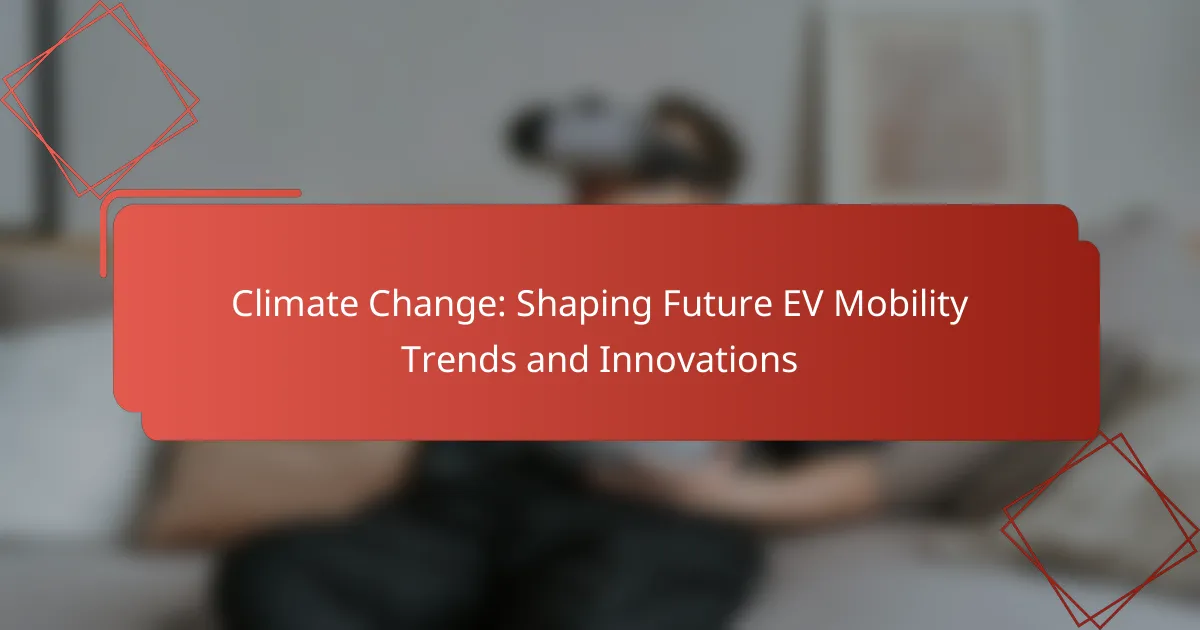Climate change is driving a transformative shift in electric vehicle (EV) mobility trends, as the demand for sustainable transportation solutions intensifies. With a focus on greener practices, both consumers and manufacturers are embracing innovations that enhance EV performance and sustainability, including advancements in battery technology and renewable energy integration.
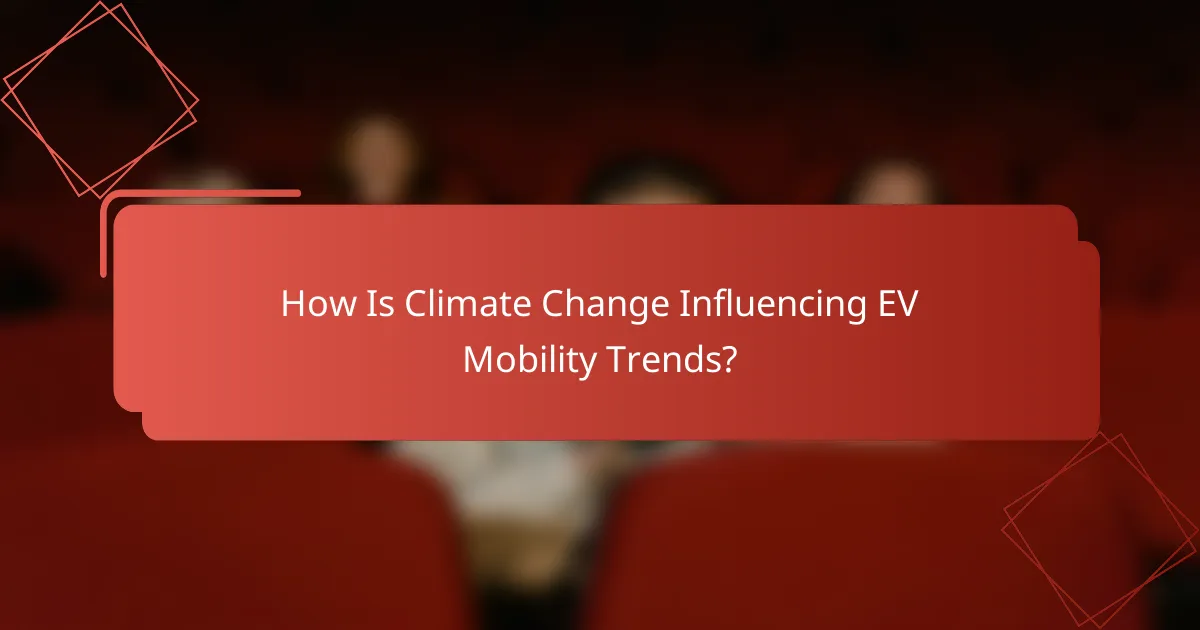
How Is Climate Change Influencing EV Mobility Trends?
Climate change is significantly shaping electric vehicle (EV) mobility trends by driving the need for greener transportation solutions. As environmental concerns rise, both consumers and manufacturers are prioritizing sustainable practices in the automotive industry.
Increased demand for sustainable transportation
The demand for sustainable transportation options is on the rise as climate change awareness grows. Consumers are increasingly seeking vehicles that minimize their carbon footprint, leading to a surge in electric vehicle sales.
Manufacturers are responding by expanding their EV offerings, with many brands committing to fully electric lineups in the coming years. This shift not only addresses consumer demand but also aligns with global sustainability goals.
Government regulations promoting electric vehicles
Governments worldwide are implementing regulations to promote electric vehicles as part of their climate action plans. Incentives such as tax credits, rebates, and grants are commonly offered to encourage EV adoption.
In addition, many countries are setting ambitious targets to phase out internal combustion engine vehicles, with some aiming for complete bans on new gasoline and diesel cars within the next couple of decades. These regulations are crucial for accelerating the transition to electric mobility.
Shift in consumer preferences towards eco-friendly options
Consumer preferences are increasingly leaning towards eco-friendly options, driven by a desire to combat climate change. Many buyers now consider the environmental impact of their vehicle choices, favoring electric models over traditional ones.
This shift is evident in various market segments, with younger generations particularly inclined to choose sustainable alternatives. As awareness of climate issues continues to grow, this trend is expected to strengthen, further influencing the automotive landscape.
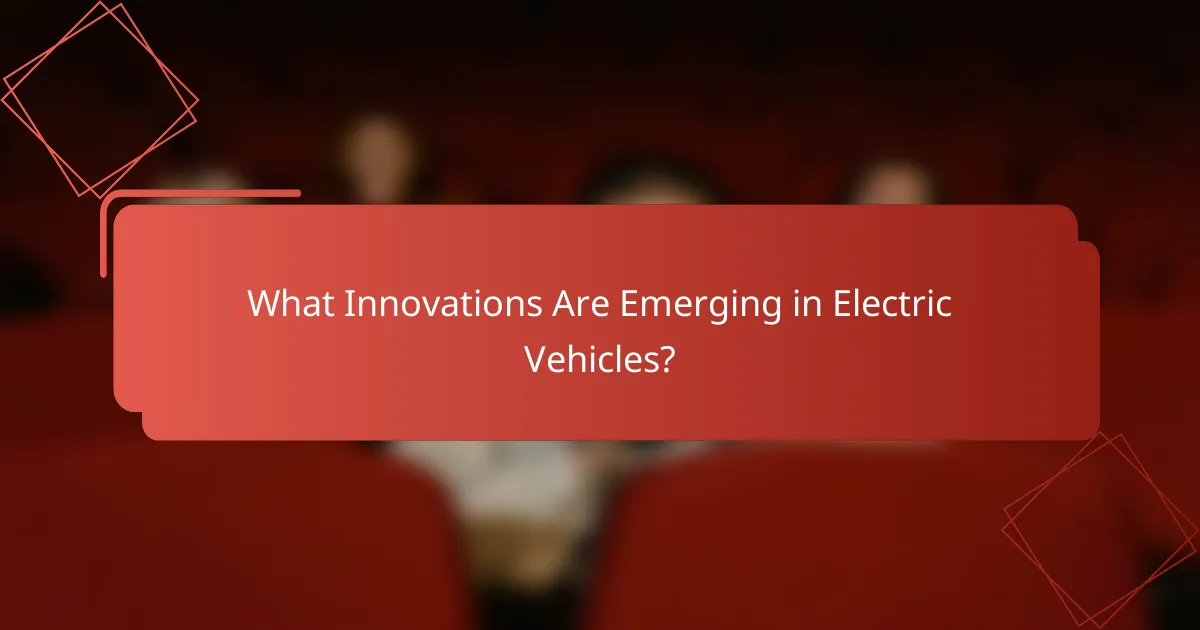
What Innovations Are Emerging in Electric Vehicles?
Electric vehicles (EVs) are experiencing rapid innovations that significantly enhance their performance, sustainability, and user experience. Key advancements include improvements in battery technology, the integration of renewable energy sources, and the development of autonomous driving features.
Advancements in battery technology
Battery technology is at the forefront of EV innovation, focusing on increasing energy density, reducing charging times, and extending lifespan. Solid-state batteries, for instance, promise higher efficiency and safety compared to traditional lithium-ion batteries.
Manufacturers are also exploring lithium-sulfur and sodium-ion batteries, which could offer lower costs and environmental impact. As these technologies mature, consumers can expect EVs with longer ranges and quicker recharges, making them more practical for everyday use.
Integration of renewable energy sources
The integration of renewable energy sources into EV charging infrastructure is transforming how electric vehicles are powered. Solar panels and wind turbines are increasingly being used to generate clean energy for charging stations, reducing reliance on fossil fuels.
Some EVs are even designed to utilize solar energy directly, with built-in solar panels that can extend driving range. This shift not only lowers emissions but also aligns with global efforts to promote sustainable energy practices.
Development of autonomous driving features
Autonomous driving technology is rapidly evolving, with many EV manufacturers investing heavily in advanced driver-assistance systems (ADAS). These features enhance safety and convenience, allowing vehicles to navigate, park, and even change lanes with minimal human intervention.
As regulations evolve, fully autonomous vehicles may become commonplace. Consumers should stay informed about the capabilities and limitations of these systems, as well as the legal implications of using them on public roads.
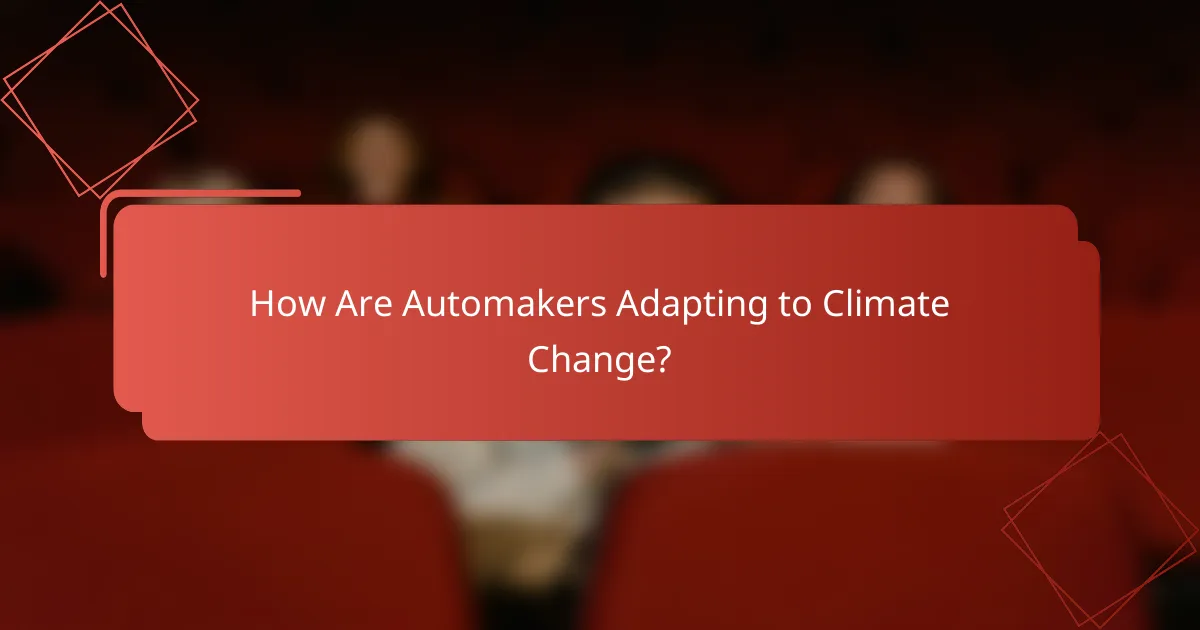
How Are Automakers Adapting to Climate Change?
Automakers are increasingly adapting to climate change by shifting their focus towards sustainable practices and electric vehicle (EV) production. This transition involves significant investments, innovative partnerships, and commitments to reduce carbon emissions.
Investment in electric vehicle production
Many automakers are allocating substantial resources to ramp up electric vehicle production. This includes building new manufacturing facilities and upgrading existing ones to accommodate EV assembly. For instance, companies like Ford and Volkswagen have announced multi-billion dollar investments to enhance their electric offerings over the next several years.
Investment strategies often involve diversifying supply chains to secure essential components like batteries. Automakers are exploring partnerships with battery manufacturers to ensure a steady supply of high-quality batteries, which are crucial for EV performance and range.
Partnerships with tech companies for innovation
Automakers are forming strategic alliances with technology firms to drive innovation in electric vehicles. These partnerships focus on developing advanced software, autonomous driving technologies, and enhanced connectivity features. For example, collaborations between traditional car manufacturers and tech giants like Google and Apple aim to integrate smart technology into vehicles.
Such partnerships can accelerate the development of charging infrastructure, making it easier for consumers to adopt EVs. By leveraging tech expertise, automakers can improve user experience and vehicle efficiency, addressing consumer concerns about range and usability.
Commitments to carbon neutrality
Many automakers are setting ambitious targets for carbon neutrality, often aiming for the next few decades. This commitment involves not only producing electric vehicles but also reducing emissions across their entire supply chain. Companies like General Motors and Volvo have pledged to become carbon neutral by 2035 or 2040, respectively.
To achieve these goals, automakers are implementing sustainable practices, such as using renewable energy sources in production and promoting recycling programs for EV batteries. Consumers can look for brands that transparently report their sustainability efforts and progress towards these carbon neutrality commitments.

What Role Do Government Policies Play in EV Adoption?
Government policies significantly influence electric vehicle (EV) adoption through incentives, infrastructure development, and emission regulations. These measures can accelerate the transition to electric mobility by making EVs more affordable and accessible while promoting necessary charging infrastructure.
Incentives for electric vehicle purchases
Incentives for purchasing electric vehicles often include tax credits, rebates, and grants. For instance, in the United States, buyers can receive federal tax credits that can range from a few thousand dollars to over $7,500, depending on the vehicle’s battery capacity. Many states also offer additional incentives that can further reduce the cost of an EV.
These financial incentives can significantly lower the upfront costs, making EVs more appealing to consumers. However, potential buyers should check local regulations, as the availability and amount of incentives can vary widely by region.
Infrastructure development for charging stations
Government policies play a crucial role in developing charging infrastructure, which is essential for supporting EV adoption. Investments in public charging stations, often funded through government grants or partnerships, help alleviate range anxiety among potential EV owners. For example, many countries are setting ambitious targets for the number of charging stations to be installed over the next decade.
Local governments may also implement zoning laws that encourage the installation of charging stations in residential and commercial areas. This can enhance accessibility and convenience for EV users, making it easier to charge vehicles at home or work.
Emission reduction targets
Emission reduction targets set by governments can drive the adoption of electric vehicles as part of broader climate goals. Many countries have committed to achieving net-zero emissions by specific dates, prompting policies that favor EVs over traditional combustion engines. For example, the European Union has set stringent emissions targets that encourage the shift to electric mobility.
These targets often lead to stricter regulations on fossil fuel vehicles, including bans on new gasoline and diesel cars in the coming years. Consumers may find that as these regulations tighten, the incentives to switch to EVs become more pronounced, making early adoption a strategic choice.
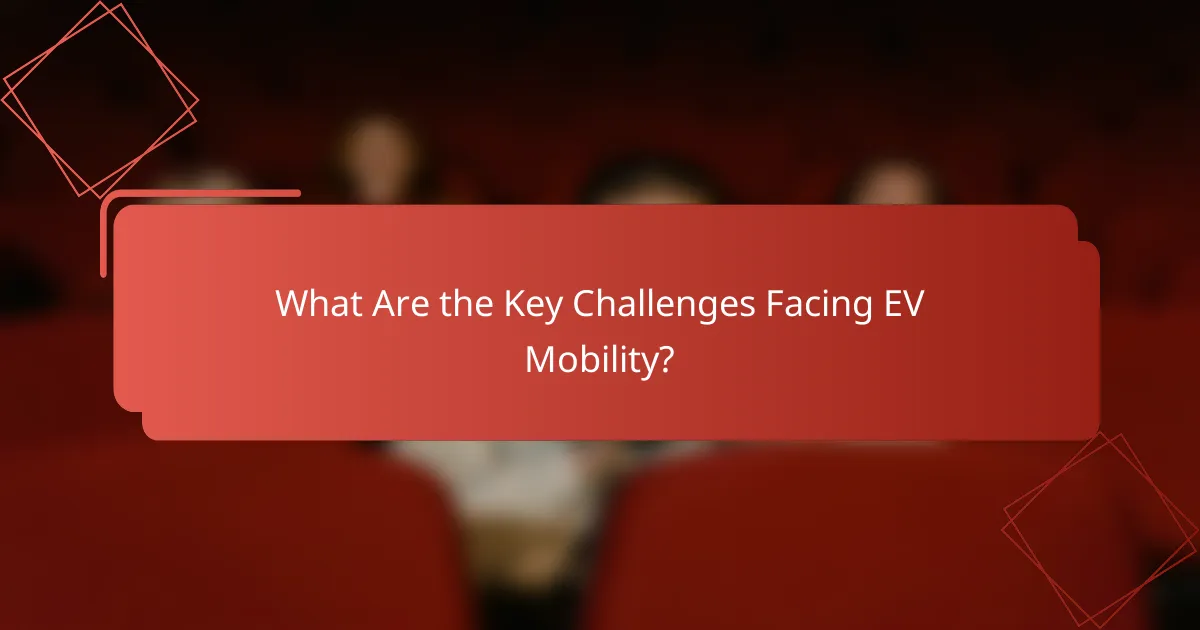
What Are the Key Challenges Facing EV Mobility?
The key challenges facing electric vehicle (EV) mobility include inadequate charging infrastructure and high initial costs. These factors significantly impact the adoption and usability of EVs, influencing consumer decisions and market growth.
Charging infrastructure limitations
Charging infrastructure is critical for the widespread adoption of electric vehicles. Many regions still lack sufficient charging stations, making it difficult for users to find convenient locations to recharge their vehicles, especially on long trips.
To address this, cities and private companies are investing in expanding charging networks. However, the pace of development often lags behind the growing demand for EVs. Users should consider the availability of charging stations in their area before purchasing an electric vehicle.
High initial costs of electric vehicles
The high initial costs of electric vehicles remain a significant barrier to entry for many consumers. While prices have been decreasing, the average cost of an EV can still be tens of percent higher than that of comparable gasoline vehicles.
Potential buyers should evaluate available incentives, such as tax credits or rebates, which can help offset these costs. Additionally, considering the long-term savings on fuel and maintenance can make EVs a more attractive option over time.
